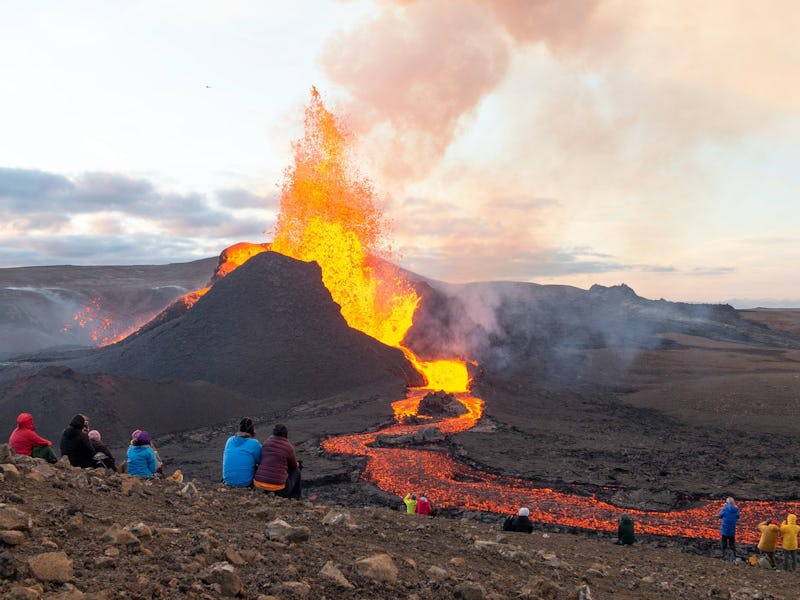Scientists Find a Possible Connection Between Climate Change and Earthquake Risk
In some areas, escalating temperatures are increasing the frequency and likelihood of wildfires and drought.

Earth’s climate is changing rapidly. In some areas, escalating temperatures are increasing the frequency and likelihood of wildfires and drought. In others, they are making downpours and storms more intense or accelerating the pace of glacial melting.
The past month is a stark illustration of exactly this. Parts of Europe and Canada are being devastated by wildfires, while Beijing has recorded its heaviest rainfall in at least 140 years. Looking back further, between 2000 and 2019, the world’s glaciers lost around 267 gigatonnes of ice per year. Melting glaciers contribute to rising sea levels (currently rising by about 3.3mm per year) and more coastal hazards such as flooding and erosion.
But research suggests that our changing climate may not solely influence hazards at the Earth’s surface. Climate change — and specifically rising rainfall rates and glacial melting — could also exacerbate dangers beneath the Earth’s surface, such as earthquakes and volcanic eruptions.
Drought in Europe and North America has received a lot of recent media coverage. But the Intergovernmental Panel on Climate Change’s Sixth Assessment Report in 2021 revealed that average rainfall has actually increased in many world regions since 1950. A warmer atmosphere can retain more water vapor, subsequently leading to higher levels of precipitation.
Interestingly, geologists have long identified a relationship between rainfall rates and seismic activity. In the Himalayas, for example, the frequency of earthquakes is influenced by the annual rainfall cycle of the summer monsoon season. Research reveals that 48 percent of Himalayan earthquakes strike during the drier pre-monsoon months of March, April, and May, while just 16 percent occur in the monsoon season.
During the summer monsoon season, the weight of up to 4 meters of rainfall compresses the crust both vertically and horizontally, stabilizing it. When this water disappears in the winter, the effective “rebound” destabilizes the region and increases the number of earthquakes that occur.
The number of earthquakes that occurred seasonally from 2003-2020
In the pre-monsoon period, the number of earthquakes increases.
Climate change could intensify this phenomenon. Climate models project that the intensity of monsoon rainfall in southern Asia will increase in the future as a result of climate change. This could feasibly enhance the winter rebound and cause more seismic events.
The impact of water’s weight on the Earth’s crust goes beyond just precipitation; it extends to glacial ice as well. As the last ice age came to an end roughly 10,000 years ago, the thawing of heavy glacial ice masses caused parts of the Earth’s crust to rebound upwards. This process, called isostatic rebound, is evidenced by raised beaches in Scotland — some of which are up to 45 meters above current sea level.
Evidence from Scandinavia suggests that such an uplift, coupled with the destabilization of the region’s tectonics, triggered numerous earthquake events between 11,000 and 7,000 years ago. Some of these earthquakes even exceeded a magnitude of 8.0 which indicates severe destruction and loss of life. The concern is that the continued melting of glacial ice today could result in similar effects elsewhere.
Raised beaches at Tongue Bay in Scotland.
How about volcanic activity?
Research has also found a correlation between glacial-load changes on the Earth’s crust and the occurrence of volcanic activity. Approximately 5,500–4,500 years ago, Earth’s climate briefly cooled, and glaciers began to expand in Iceland. Analysis of volcanic ash deposits spread throughout Europe suggests that volcanic activity in Iceland markedly reduced during this period.
There was a subsequent increase in volcanic activity following the end of this cool period, albeit with a delay of several hundred years.
This phenomenon can be explained by the weight of glaciers compressing both the Earth’s crust and the underlying mantle (the mostly solid bulk of Earth’s interior). This kept the material that makes up the mantle under higher pressure, preventing it from melting and forming the magma required for volcanic eruptions.
However, deglaciation and the associated loss of weight on the Earth’s surface allowed a process called decompression melting to occur, where lower pressure facilitates melting in the mantle. Such melting resulted in the formation of liquid magma that fuelled the subsequent volcanic activity in Iceland.
Even today, this process is responsible for driving some volcanic activity in Iceland. Eruptions at two volcanoes, Grímsvötn and Katla, consistently occur during the summer period when glaciers retreat.
It is, therefore, feasible that ongoing glacial retreats due to global warming could potentially increase volcanic activity in the future. However, the time lag between glacial changes and the volcanic response is reassuring for now.
The impacts of a changing climate are becoming more evident, with unusual weather events having become the norm rather than the exception. However, the indirect impacts of climate change on the ground beneath our feet are neither widely known nor discussed.
This must change if we are to minimize the effects of the changing climate that have already been set firmly in motion.
This article was originally published on The Conversation by Matthew Blackett at Coventry University. Read the original article here.
This article was originally published on